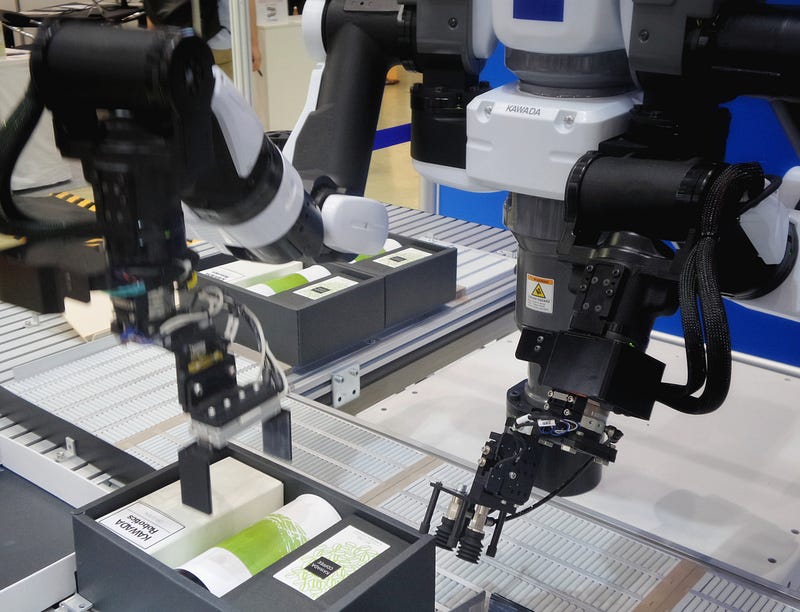
Robotic exosuits have emerged as a revolutionary technology that holds immense potential for transforming various industries and businesses. These powered wearable devices, often referred to as exoskeletons, are designed to augment human capabilities, offering increased strength, endurance, and precision. In this article, we will explore how robotic exosuits can be utilized in industry and business to enhance training programs and boost production levels. By providing a comprehensive understanding of their applications, benefits, and considerations, we aim to shed light on the immense value these exosuits bring to the modern workplace.
Improved Training Programs:
Robotic exosuits have the capacity to revolutionize training processes across multiple industries. By utilizing exoskeleton technology, companies can enhance the learning experience for their employees and provide a safer and more efficient training environment. Here’s how robotic exosuits can be utilized in training programs:
a) Enhanced Physical Abilities:
Exosuits provide individuals with increased strength and endurance, allowing them to handle physically demanding tasks more effectively. By incorporating exosuits into training programs, companies can prepare workers for physically strenuous tasks, such as heavy lifting or repetitive movements, by reducing the risk of injuries and increasing overall productivity.
b) Realistic Simulations:
Exosuits can be integrated with virtual reality (VR) or augmented reality (AR) systems to create immersive training simulations. This combination allows trainees to experience real-life scenarios while wearing the exosuit, providing valuable hands-on experience and helping them develop critical skills in a controlled environment.
c) Ergonomic Support:
Many industrial tasks involve repetitive motions or maintaining uncomfortable positions for extended periods. Robotic exosuits can alleviate the strain on workers’ bodies by providing ergonomic support and reducing the risk of musculoskeletal injuries. By incorporating exosuits into training, companies can promote worker well-being and reduce long-term health risks.
Increased Production Levels:
The integration of robotic exosuits into industrial and business settings has the potential to significantly boost production levels. By augmenting human capabilities, exosuits offer several advantages that positively impact productivity:
a) Amplified Strength and Endurance:
Exosuits allow workers to perform tasks that require heavy lifting or exertion for extended periods without experiencing fatigue. This increased strength and endurance translate to higher productivity levels, as workers can sustain their performance for longer durations.
b) Precision and Accuracy:
Exoskeletons often incorporate sensors and feedback systems that provide real-time data on movements, force exertion, and position. This data can be utilized to enhance precision and accuracy in tasks that demand fine motor skills, resulting in improved quality control and overall productivity.
c) Reduced Downtime and Injuries:
Workplace injuries and fatigue-related downtime can significantly impact production levels. By mitigating the physical strain on workers, exosuits help reduce the risk of injuries and associated recovery time, ensuring a more continuous workflow.
Considerations and Challenges:
While the potential benefits of robotic exosuits in industry and business are vast, some considerations should be taken into account:
a) Cost and Implementation:
Integrating exosuit technology into existing workflows may require significant upfront investments. Companies must evaluate the cost-benefit analysis and carefully assess the feasibility and return on investment before adopting exosuit solutions.
b) Training and Familiarization:
Workers will require adequate training and familiarization to effectively utilize exosuits. Companies must allocate resources for comprehensive training programs and provide ongoing support to ensure seamless integration and optimal utilization.
c) Safety and Ergonomics:
While exosuits can enhance safety and ergonomics, there is a need for continuous monitoring and adjustment to address potential risks. Proper fit, ergonomic design, and adherence to safety guidelines are crucial to avoid any unintended consequences.
Conclusion:
Robotic exosuits present a remarkable opportunity for industry and business to enhance training programs and increase production levels. By leveraging the strength, endurance, and precision these devices offer, companies can create a safer and more efficient work environment, reducing the risk of injuries and improving overall productivity. While there are considerations and challenges to be addressed, the potential benefits of exosuit integration make it a compelling prospect for forward-thinking organizations aiming to stay ahead in the rapidly evolving technological landscape.

No comments:
Post a Comment